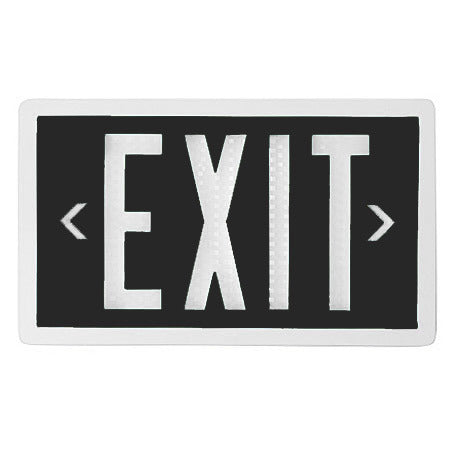
54 Products
-
 Sale
SaleRed Self Luminous Tritium Exit Sign
Ceiling MountLow ProfileRecessedThermoplasticTritium Self LuminousWall MountWet Location -
 Sale
SaleGreen Self Luminous Tritium Exit Sign
Ceiling MountLow ProfileRecessedThermoplasticTritium Self LuminousWall MountWet Location -
 Sale
SaleBlack Self Luminous Tritium Exit Sign
Ceiling MountLow ProfileRecessedThermoplasticTritium Self LuminousWall MountWet Location -

Low-Profile Exit Sign - Red/Green Universal Mount
Battery BackupCeiling MountDamp LocationEnd MountLEDLow ProfileThermoplasticUniversal MountWall Mount -

Compact Wet-Location LED Exit Sign - Housing-Color: White
Battery BackupCeiling MountCold WeatherDamp LocationEnd MountLEDSelf TestingThermoplasticUniversal MountWall MountWet Location -

Thin Die-Cast Aluminum Low Profile LED Exit Sign
ArchitecturalBattery BackupCeiling MountDamp LocationDie-Cast AluminumEnd MountLEDLow ProfileUniversal MountWall Mount -

Tritium Recycle Disposal
Tritium Self Luminous -

NYC Approved 8-Inch Die-Cast Aluminum LED Exit Sign
Battery BackupCeiling MountDamp LocationDie-Cast AluminumEnd MountLEDLow ProfileNew York City ApprovedSelf TestingUniversal MountWall Mount -

Swivel-Mount Edge-Lit Exit Sign – Surface or Recessed, 90 Min Backup
ArchitecturalBattery BackupCeiling MountDamp LocationEdge-LitEnd MountLEDLow ProfileRecessedSelf TestingUniversal MountWall Mount -

Low Profile Steel LED Exit Sign – Universal, Red or Green Letters
Battery BackupCeiling MountDamp LocationEnd MountLEDLow ProfileSelf TestingSteelUniversal MountWall Mount -

Ultra-Slim Die-Cast Aluminum LED Exit Sign – Battery Backup & Universal Mount
ArchitecturalBattery BackupCeiling MountDamp LocationDie-Cast AluminumEnd MountLEDLow ProfileWall Mount -

Tritium Self-Luminous Exit Sign – 10 or 20 Years, No Power Required
Ceiling MountCold WeatherEnd MountTamper ResistantTritium Self LuminousUniversal MountWall MountWet Location
















